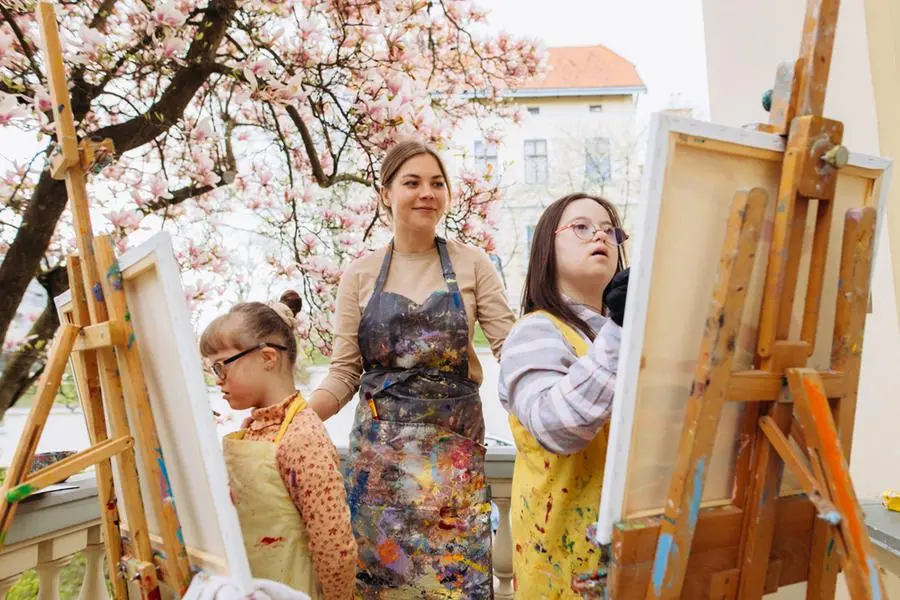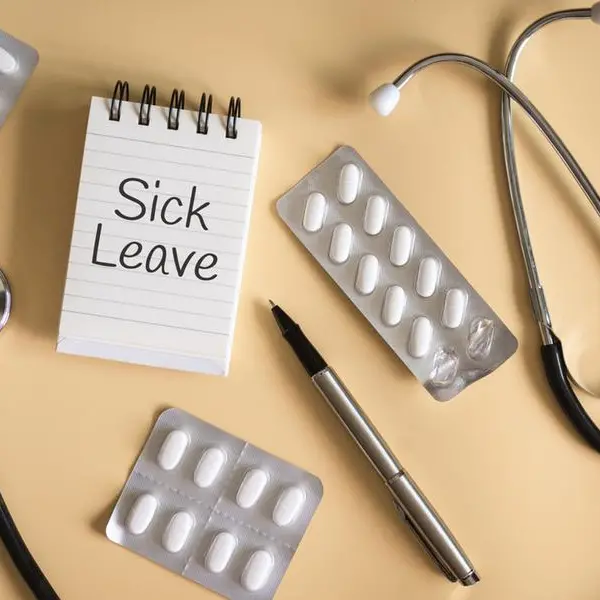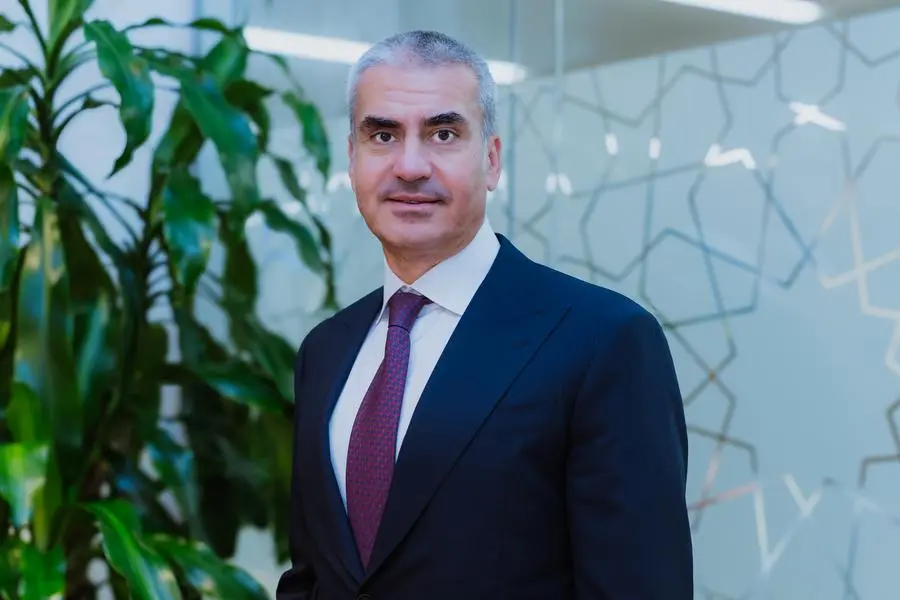PHOTO
An empathetic and supportive shot of a caregiver with two young girls with mental disabilities, guiding them through an art therapy session, with a sense of care and attention in the composition. Image Courtesy: Getty Images
Art therapy is a relatively new therapeutic discipline that offers a unique and expressive pathway to emotional well-being. In fact, it was only in 1971 that the American Psychological Association (APA) officially recognised Art Therapy as a mental health profession. But what exactly is it?
Najah Musthafa, an art psychotherapist at Monarch Health Centres in Dubai working in the field for over six years, explains how art therapy can help support people with everything — from expressing their emotions, reducing stress, encouraging self-exploration and insight, to coping with trauma, building self-esteem and effective communication pathways to support relationship building.
Introduction to Art Therapy
Art therapy is an evidence-based experiential psychotherapy approach employing creative, innovative, hands-on and practical techniques. It integrates mental health and human services by using active art-making, creative processes, applied psychological theory, biological understanding, educational models, sociocultural constructs and the human experience.
Art therapy, in its nature, is non-threatening, empathetic, and a validating process that explores meaning making, purpose and perspective through the art process. It includes, but is not limited to, counselling, treatment interventions, assessment, and diagnosis.
Common misconceptions
When most people think about Art Therapy, they probably think about adult colouring books, song writing or other creative endeavours that we explore for pleasure, novelty, creative expression, and relaxation.
However, the therapeutic use of art and art therapy are not the same. In the context of psychological practices, art therapy is led by licensed professionals who are trained in both psychology and art, and is a safely guided process to diagnose and treat mental health and support well-being. Art therapists require a minimum of a master’s degree in the field of art therapy to practice.
Another common misconception about art therapy is that it is exclusively for children. And while it is a great way for those who struggle with expressing themselves verbally to communicate, formal art therapy is inclusive of people at different developmental stages in life. You may also be thinking that you need be good at art to benefit from art therapy, but that’s not the case.
Art therapy focuses on how images, their expression, and how we receive information from our senses reflect emotional experiences. In turn, art therapists help clients examine how those emotional experiences affect thoughts and behaviour. Aesthetics or technique are not the goal here. You don’t need to be talented or an artist to reap the benefits of art therapy.
Art therapy and trauma
Art therapy is heavily researched and has taken large strides in working with trauma. Research has found that trauma is stored in the right hemisphere of the brain and speech is located in the left hemisphere, making it harder for us to find words to match our experience. Because art making engages the right brain, it can bypass this speech-language issue and directly and safely access traumatic memories and support processing them. Patients can then use words to explore the artwork, reintegrating the left and right hemispheres of the brain.
Personal experiences
Early in my career, two artworks were produced by a patient that I still think about today. One was a drawing of Toothless the dragon from How to Train your Dragon and the other was a collage of the Empire State Building with a lightning strike where the flame torch is held. My patient couldn’t directly share his experience verbally at the time, but he mentioned feeling like Toothless: people were scared of him because he was different, but in his reality, he was actually scared of them. He also went on to share that people think the lightning strike is coming from the torch when in his reality, he was the one being struck by the lightning.
Is art therapy right for you?
If you struggle to verbalise or express your thoughts, feelings, and experiences, art therapy may be an especially good choice. If you are hesitant about the art component, understand that it’s quite a natural part of this process and one we are trained to support you with. We are always happy to answer your questions and co-create a plan unique to your needs or direct you to a clinician that is best suited for your needs.
As told to Ghenwa Yehia
wknd@khaleejtimes.com
Copyright © 2022 Khaleej Times. All Rights Reserved. Provided by SyndiGate Media Inc. (Syndigate.info).























